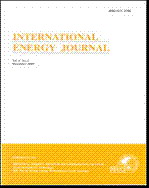ThaiScience
ThaiScience
INTERNATIONAL ENERGY JOURNAL
Volume 20, No. 04, Month DECEMBER, Year 2020, Pages 595 - 610
Economic viability analysis of wind energy in nepal
Raju Laudari, Kamal Banskota, Balkrishna Sapkota
Abstract Download PDF
Shifting the energy mix of Nepal from the domination of traditional biomass followed by imported fossil fuel is a matter of urgency to drive the nation towards a low carbon and self-energy reliance economy. The full deployment of economically viable wind energy can be instrumental in increasing the share of renewable energy. The objective of this paper is to analyze economic viability of wind energy in different parts of Nepal based on the data from twelve research sites, four case study sites and the Global Wind Atlas dataset. The research found that viability of wind energy is high in high mountains, mid hill river corridors/valleys. Full capitalization of wind energy reduces the use of 0.31million kl fossil fuel annually, substitutes about 6.8% of annual import of petroleum fuel, avoids 4.5 million tons of CO2 emission annually and increases independency in energy supply in the country. The financial surplus generated due to petroleum fuel import substitution and investment grant reduction will be sufficient in producing 1082MW wind energy. Based on a cost benefit analysis, the implementation of a suitable feed-in-tariff policy coupled with the scaled-up plan of wind energy is an appropriate policy for enhancing the viability of wind power generation in Nepal.
Keywords
cost benefit analysis, CO2 avoidance, ecological region, economic viability, wind energy.INTERNATIONAL ENERGY JOURNAL
Published by : Asian Institute of Technology
Contributions welcome at : http://www.rericjournal.ait.ac.th
